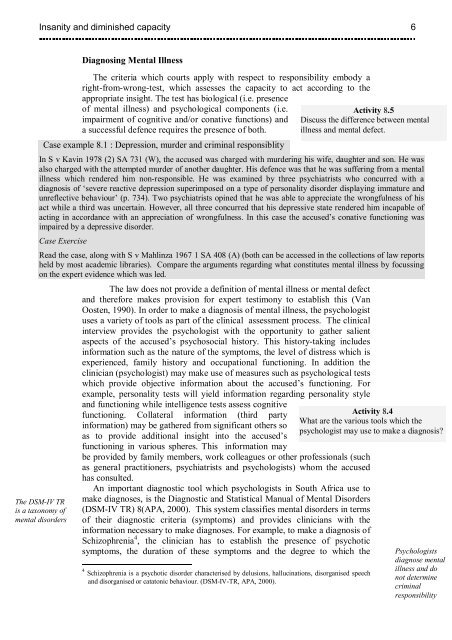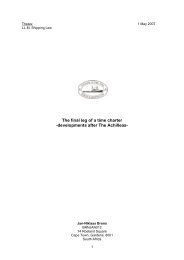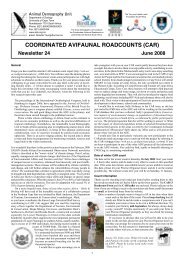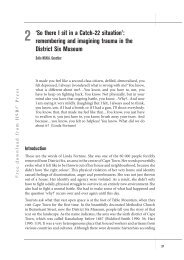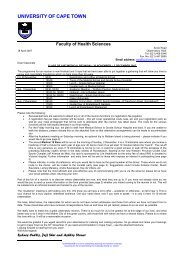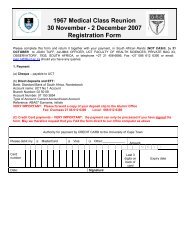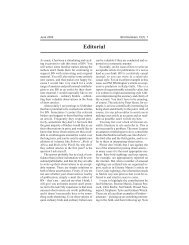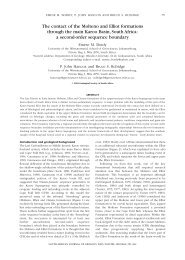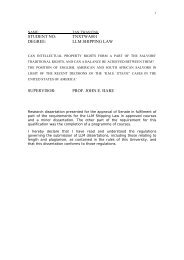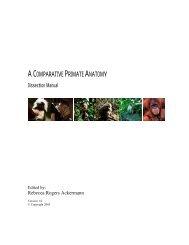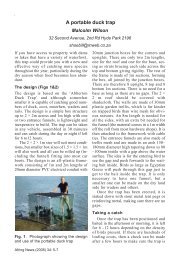insanity.pdf
insanity.pdf
insanity.pdf
Create successful ePaper yourself
Turn your PDF publications into a flip-book with our unique Google optimized e-Paper software.
Insanity and diminished capacity 6<br />
Diagnosing Mental Illness<br />
The criteria which courts apply with respect to responsibility embody a<br />
right-from-wrong-test, which assesses the capacity to act according to the<br />
appropriate insight. The test has biological (i.e. presence<br />
of mental illness) and psychological components (i.e.<br />
impairment of cognitive and/or conative functions) and<br />
a successful defence requires the presence of both.<br />
Case example 8.1 : Depression, murder and criminal responsiblity<br />
Activity 8.5<br />
Discuss the difference between mental<br />
illness and mental defect.<br />
In S v Kavin 1978 (2) SA 731 (W), the accused was charged with murdering his wife, daughter and son. He was<br />
also charged with the attempted murder of another daughter. His defence was that he was suffering from a mental<br />
illness which rendered him non-responsible. He was examined by three psychiatrists who concurred with a<br />
diagnosis of ‘severe reactive depression superimposed on a type of personality disorder displaying immature and<br />
unreflective behaviour’ (p. 734). Two psychiatrists opined that he was able to appreciate the wrongfulness of his<br />
act while a third was uncertain. However, all three concurred that his depressive state rendered him incapable of<br />
acting in accordance with an appreciation of wrongfulness. In this case the accused’s conative functioning was<br />
impaired by a depressive disorder.<br />
Case Exercise<br />
Read the case, along with S v Mahlinza 1967 1 SA 408 (A) (both can be accessed in the collections of law reports<br />
held by most academic libraries). Compare the arguments regarding what constitutes mental illness by focussing<br />
on the expert evidence which was led.<br />
The DSM-IV TR<br />
is a taxonomy of<br />
mental disorders<br />
The law does not provide a definition of mental illness or mental defect<br />
and therefore makes provision for expert testimony to establish this (Van<br />
Oosten, 1990). In order to make a diagnosis of mental illness, the psychologist<br />
uses a variety of tools as part of the clinical assessment process. The clinical<br />
interview provides the psychologist with the opportunity to gather salient<br />
aspects of the accused’s psychosocial history. This history-taking includes<br />
information such as the nature of the symptoms, the level of distress which is<br />
experienced, family history and occupational functioning. In addition the<br />
clinician (psychologist) may make use of measures such as psychological tests<br />
which provide objective information about the accused’s functioning. For<br />
example, personality tests will yield information regarding personality style<br />
and functioning while intelligence tests assess cognitive<br />
functioning. Collateral information (third party<br />
information) may be gathered from significant others so<br />
as to provide additional insight into the accused’s<br />
functioning in various spheres. This information may<br />
be provided by family members, work colleagues or other professionals (such<br />
as general practitioners, psychiatrists and psychologists) whom the accused<br />
has consulted.<br />
An important diagnostic tool which psychologists in South Africa use to<br />
make diagnoses, is the Diagnostic and Statistical Manual of Mental Disorders<br />
(DSM-IV TR) 8(APA, 2000). This system classifies mental disorders in terms<br />
of their diagnostic criteria (symptoms) and provides clinicians with the<br />
information necessary to make diagnoses. For example, to make a diagnosis of<br />
Schizophrenia 4 , the clinician has to establish the presence of psychotic<br />
symptoms, the duration of these symptoms and the degree to which the<br />
4 Schizophrenia is a psychotic disorder characterised by delusions, hallucinations, disorganised speech<br />
and disorganised or catatonic behaviour. (DSM-IV-TR, APA, 2000).<br />
Activity 8.4<br />
What are the various tools which the<br />
psychologist may use to make a diagnosis?<br />
Psychologists<br />
diagnose mental<br />
illness and do<br />
not determine<br />
criminal<br />
responsibility


